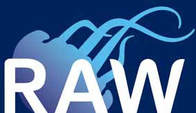Conservation Abstracts
|
CONSERVATION IN THE CLASSROOM
Gregory Jeff Barord, CUNY - Graduate Center and Brooklyn College Watch Video (Login required) Full Abstract
Conservation biology is a fast growing field in the scientific community and maintaining direct and clear communication with the public is vital. The National Science Foundation supports a GK-12 Fellowship at universities throughout the United States. The particular GK-12 program at Brooklyn College is called, City-As-Lab, and pairs graduate students with Brooklyn high schools to illustrate the importance of science in the local community. As a fellow in the program, I have worked at the Brooklyn Academy of Science and the Environment to coordinate and plan science projects that have related important topics, such as water quality and conservation, to the urban environment that the students live in everyday. This program has also given me the opportunity to share my current conservation based research on the chambered nautilus with the high school students in the classroom and discuss important concepts with the students. The students have been extremely receptive and have enjoyed field trips involving seine nets and laborious water quality testing while also being creative and attentive during classroom lessons. The success of modern scientists is becoming increasingly dependent on the scientist's ability to communicate to a broad audience. It is no longer acceptable to only converse with other scientists behind closed doors. The National Science Foundation is committed to improving scientific communication with a broader group of citizens and the program that I am currently in certainly accomplishes that goal. Through the program, I have improved my communication skills with high school students through field trips, creating lesson plans, and assisting students with their individual projects and interests. As Kurt Vonnegut wrote, "Any scientist who cannot explain his work to an eight-year old is a charlatan". |
BOBBING BRUSHES: COLLECTING LARVAE OUT IN THE PACIFIC
Julianne E. Steers, Ocean Institute Watch Video (Login required) Full Abstract
The Ocean Institute lives by the following creed: Experience is the Teacher. Our latest endeavor has developed many partnerships and implemented a unique hands-on experience. The Nicholas Endowment has provided the Ocean Institute with the opportunity to create our Larval Settlement Laboratory. Interns and staff use our petite lab to focus on the youngest life stages of marine organisms including settlement and recruitment dynamics. Currently, we are analyzing larval settlement at the largest artificial reef in the United States. The reef, coined Wheeler North Reef, was completed in 2008. It was built just off San Clemente to mitigate any impact on marine life from the San Onofre Nuclear Generating Station (SONGS). SONGS requires the ocean's water to cool its system so when the water exits back into the ocean, it is warmer and raises the temperature of the ocean around the plant. This increase in temperature affects the normal and natural growth of kelp; thus, the need for an artificial reef. This reef is already home to many species and hopefully, hundreds more as it develops. Our team is conducting research in collaboration with senior scientists at UC Santa Barbara by deploying brushes within the reef to see what organisms settle. |
RESTORING CORAL REEFS THROUGH AZA PARTNERSHIPS
Ken Nedimeyer with Kevin Gaines presenting, Coral Restoration Foundation Watch Video (Login required) Full Abstract
The Coral Restoration Foundation (CRF) has actively restored reefs in the Upper Florida Keys for over ten years. CRF has pioneered culture methods for two Endangered Species Act "threatened" hard corals, staghorn and elkhorn. The mission of CRF is to develop affordable, effective strategies for protecting and restoring coral reefs and to train and empower others to implement those strategies in their coastal communities. CRF has planted over 1,000 staghorn corals at Molasses Reef in Key Largo in 2011. Using volunteers from local high schools, dive clubs and beyond, CRF has achieved a 95% survivorship rate on the corals outplanted from the nursery to the reef after one year of monitoring. There are many opportunities for AZA institutions to become involved and partner with CRF. From the 85 plus types of staghorn genotypes at our nursery to long-term monitoring on outplanted sites, research by CRF is limited and science expertise is welcomed. CRF has been fortunate enough to partner with the Florida Aquarium to compare land-based staghorn coral growth and survivorship with CRF's nursery-raised corals. This ongoing collaboration has also developed pioneering work in coral spawning and fertilization studies which will one day lead to increased awareness regarding natural recruitment and possible land-based sexual coral reproduction. The Georgia Aquarium has also partnered with CRF. GA staff have worked in the staghorn and elkhorn nursery, outplanted corals to their Molasses Reef sponsored site and helped with maintenance and monitoring at several other reef restoration areas. CRF is excited to work with other AZA institutions to further their conservation mission and help support our valuable and successful restoration programs in the US and abroad. |
|
FLORIDA CORAL RESCUE FROM THE NAVY'S TRUMAN MOLE PIER, KEY WEST, FL. NOVEMBER 2011
Bob Snowden, Pittsburgh Zoo & PPG Aquarium Watch Video (Login required) Full Abstract
Four AZA institutions took part in a coral rescue from the Navy's Truman Mole Pier in Key West, Florida in mid to late November 2011. The Pittsburgh Zoo & PPG Aquarium, the John G. Shedd Aquarium, the Georgia Aquarium, and the Florida Aquarium all took part in this rescue effort. Overall, 465 corals were rescued from the pier wall and nursery area. These corals are being held at all 4 facilities and will be used for display, education, and propagation efforts. |

